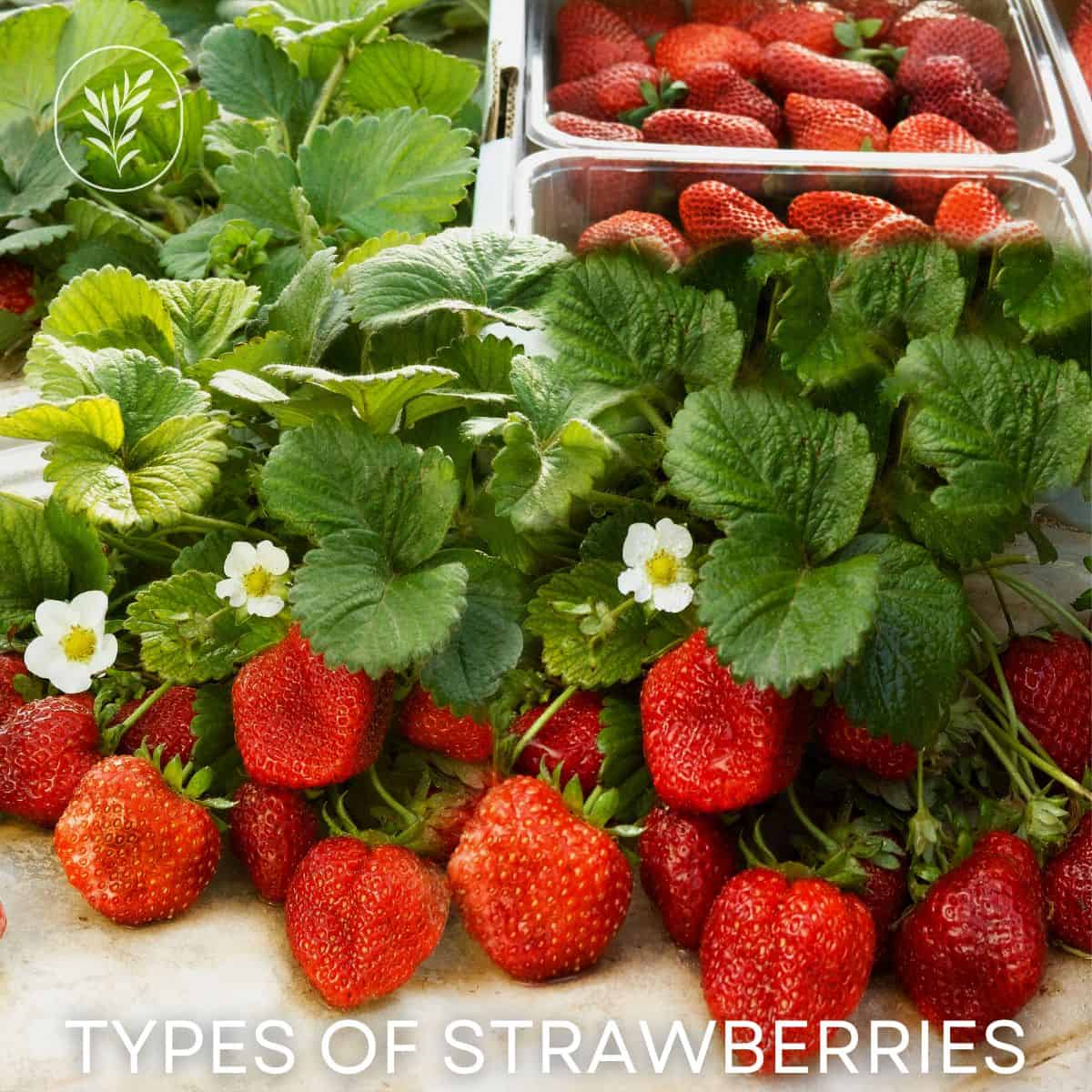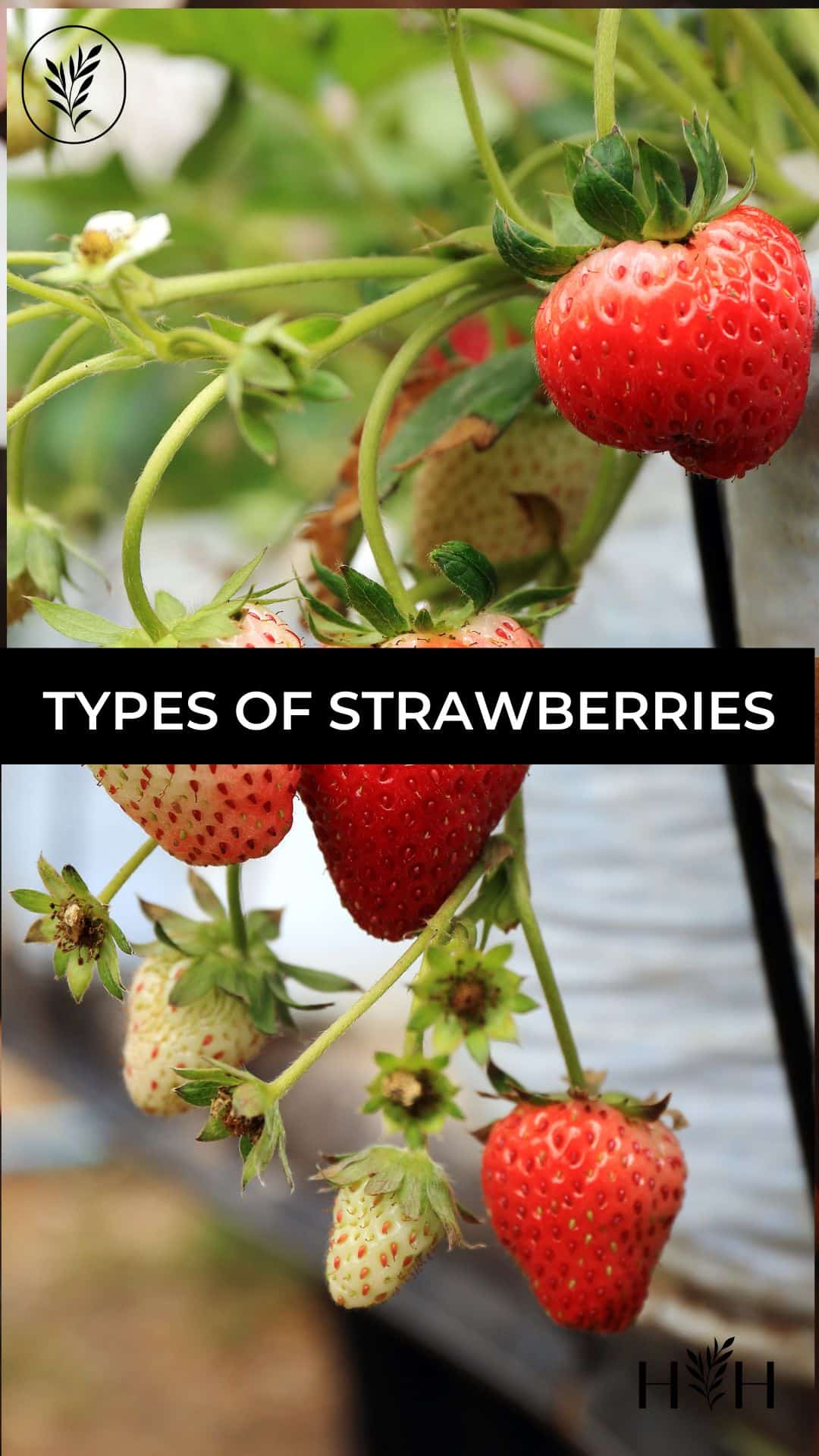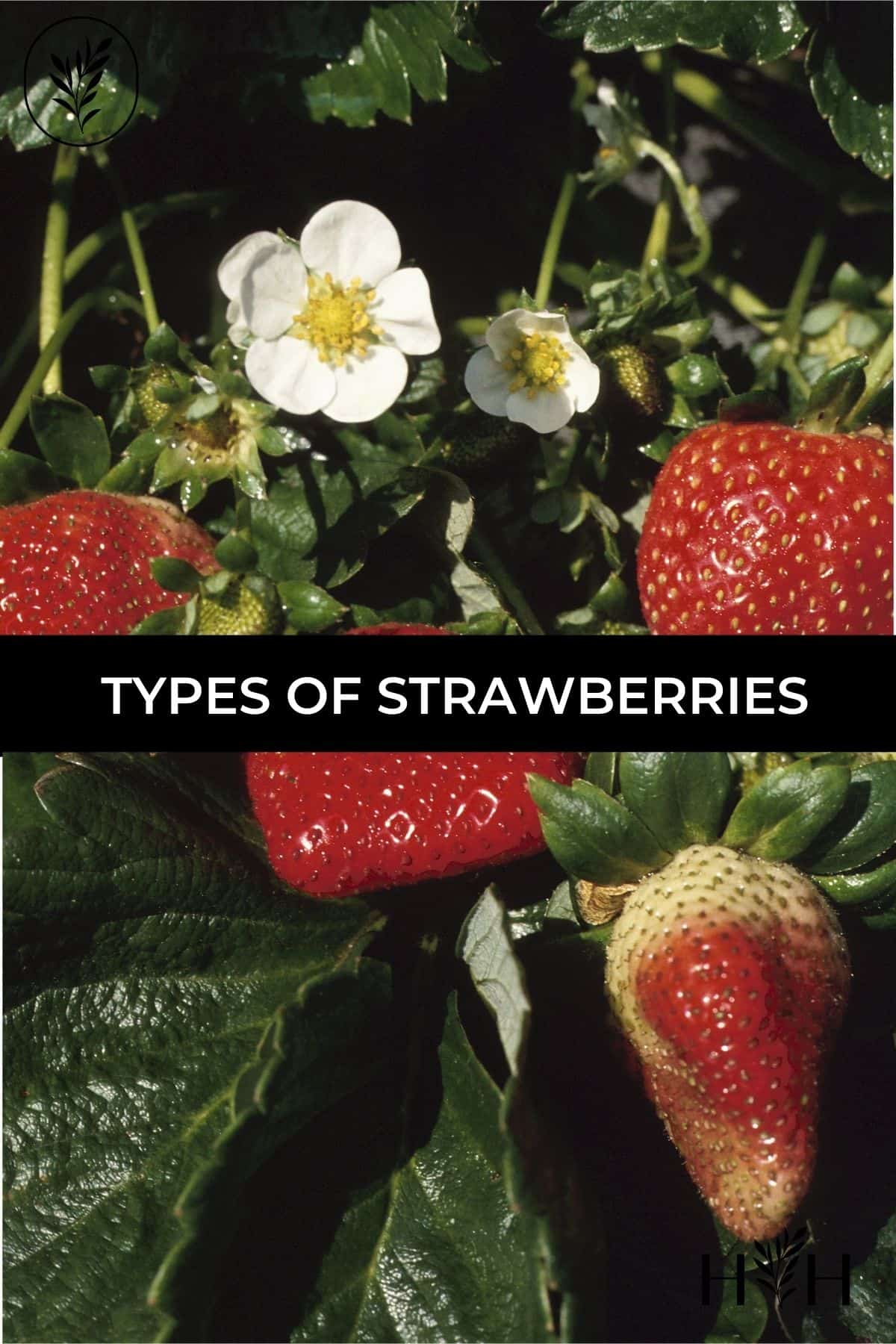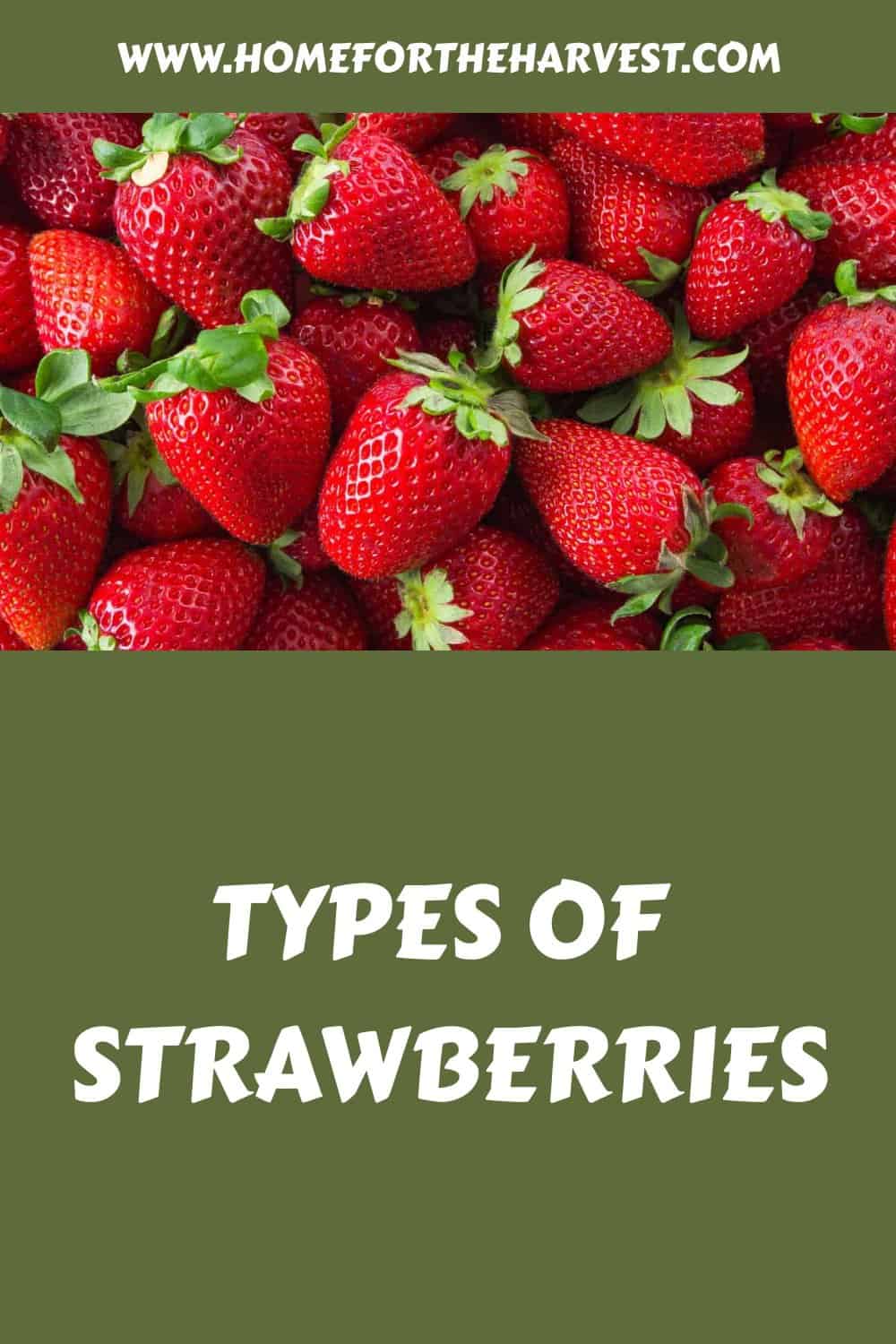Wondering about different types of strawberries? Knowing which kind you have makes caring for the plants much easier and more effective.
There are three types of strawberries: June-bearing, everbearing, and day-neutral. Sometimes everbearing and day-neutral types are grouped together as they have many similarities. Gardeners commonly grow both a June-bearing and a day-neutral variety to get fresh berries from June through until frost.
June-bearing strawberries grow a single, large, flavorful crop that usually ripens in mid-late June. Everbearing varieties produce two light crops yearly- typically one in June and another in the fall. Day-neutral plants are improved everbearing-type strawberries and produce a steady harvest throughout the growing season that tends to be larger overall.
Read on to learn all about the three main types of strawberries.
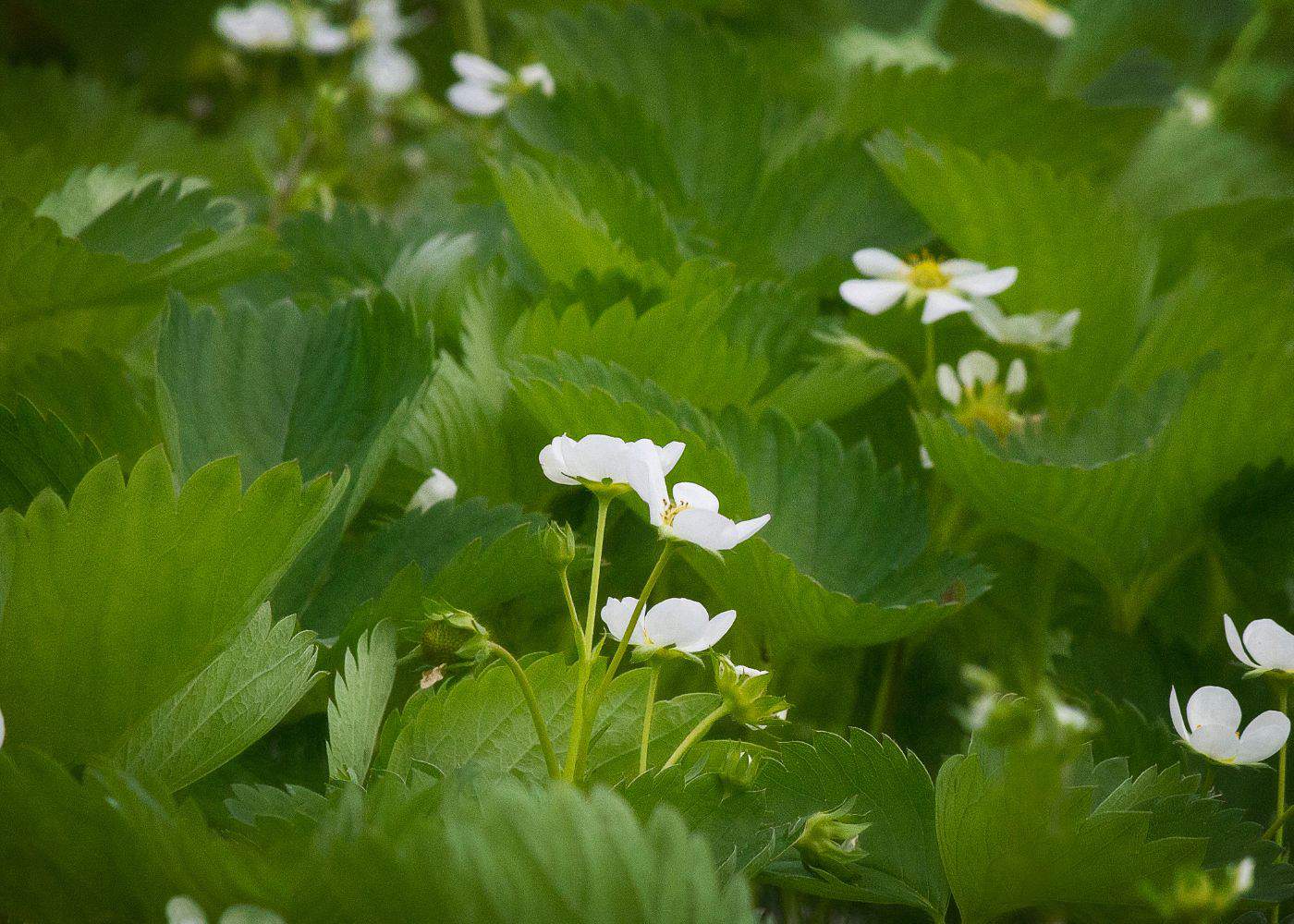
The main types of strawberry plants
The main types of strawberries are June-bearing, everbearing, and day-neutral. There are numerous different cultivars/varieties within each type category. They all have different characteristics in terms of fruiting schedule, size, flavor, and shelf life.
The three general type categories divide the hundreds of strawberry varieties up by when the plants grow their flower buds:
- June-bearing: flower buds form when days are short in the fall
- Everbearing: flower buds form when days are long in the summer
- Day-neutral: flower buds form no matter how long the days are
June-bearing is the traditional type of strawberry plant. These plants produce a single large crop every year. It usually starts to ripen in mid-late June. These varieties tend to have a harvest season that lasts for about three weeks (usually into July).
“June-bearing types are most popular for the home garden and commercial use and are well worth waiting for because of their high yields, outstanding flavor and quality.”
Ohio State University Extension, Growing strawberries in the home garden
The berries of June-bearers tend to be larger, have a longer shelf life, and are generally more flavorful than those of everbearing/day-neutral. The plants tend to be more vigorous than the other types of strawberries and have the largest overall yield per year, but they also require more care and maintenance. You also don’t get much fruit from them the first year.
Everbearing types produce two small crops- usually one in June and another in early fall. These berries are smaller and not as sweet as the June-bearing types, but the plants are much less vigorous, requiring less care and maintenance.
Day-neutral types produce a steady harvest of small to medium-sized berries throughout much of the growing season (usually July-October). Most day-neutral varieties tend to be more productive and flavorful than everbearing cultivars, but the plants do not last very long and are typically grown as annuals by growers looking for good production.
June-bearing varieties are the best choice if you have lots of space want large, flavorful berries (and lots of them). Everbearing varieties are the traditional low-maintenance choice for regions with a long growing season. Day-neutral varieties are best if you’ve got limited space, often have late spring hard frosts, or are looking for a steady supply of yummy berries after early July.
Better yet, grow both June-bearing and day-neutral varieties for the longest harvest window! Both types are delicious, and you can enjoy fresh berries from June to October.
“Generally, day-neutral varieties are just as sweet as June-bearing varieties. San Andreas and Albion were found to be the sweetest in UMN trials.”
University of Minnesota Extension, Day-neutral strawberries
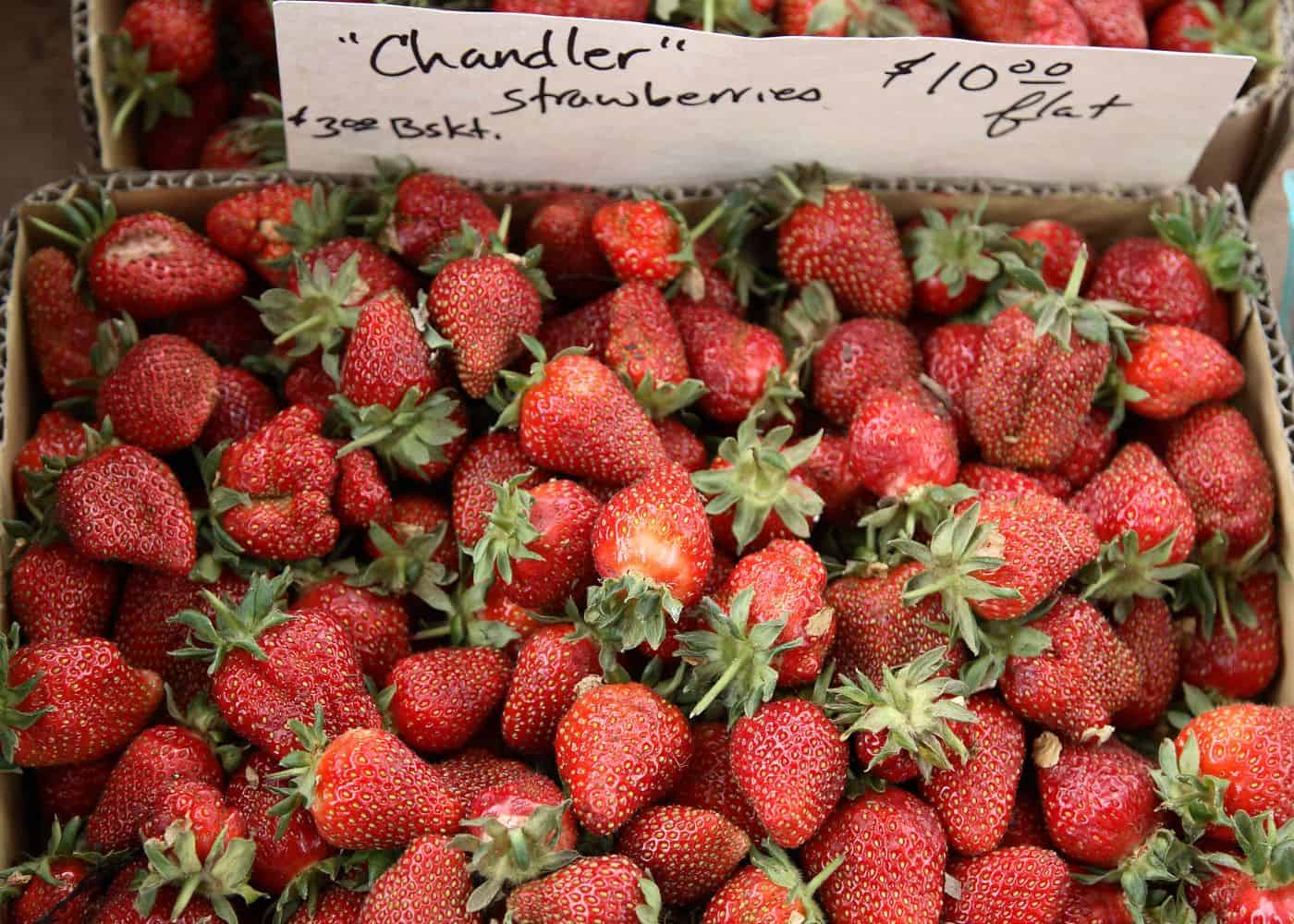
June bearing strawberries
June-bearing is the most common type of strawberries both in terms of garden plants and for market growers. The plants produce one large crop of berries each season, usually in mid to late June. The berries are generally larger than other types and have a longer shelf life. They are also more flavorful than the other types, making them ideal for fresh eating or preserving/canning.
The plants tend to be more vigorous and require more care and maintenance than the everbearing or day-neutral types. They also require a longer chilling period and more cold weather for optimal production.
Of the three types, June-bearing strawberries normally produce the largest yield (over the whole year), but it occurs during a short harvest period (usually 3 weeks). This is perfect for those who love strawberry season and plan to make lots of strawberry shortcake, strawberry jam, and just generally enjoy the berries “in-season.”
June-bearer set their flower buds in August and September strawberries when nighttime temperatures start to fall and the days start to get shorter. The flower buds stay on the plant through the winter while the plant is dormant. Then in the spring, typically in mid-May, the flowers open and can be pollinated. The berries are usually harvested for a three-week period starting about a month after pollination.
In July and August, June-bearing strawberries focus on vegetative growth, sending out runners while the days are long, there’s lots of sunlight, and nights don’t get too cold.
June-bearing strawberry varieties
Here are some popular June-bearing strawberry varieties to grow:
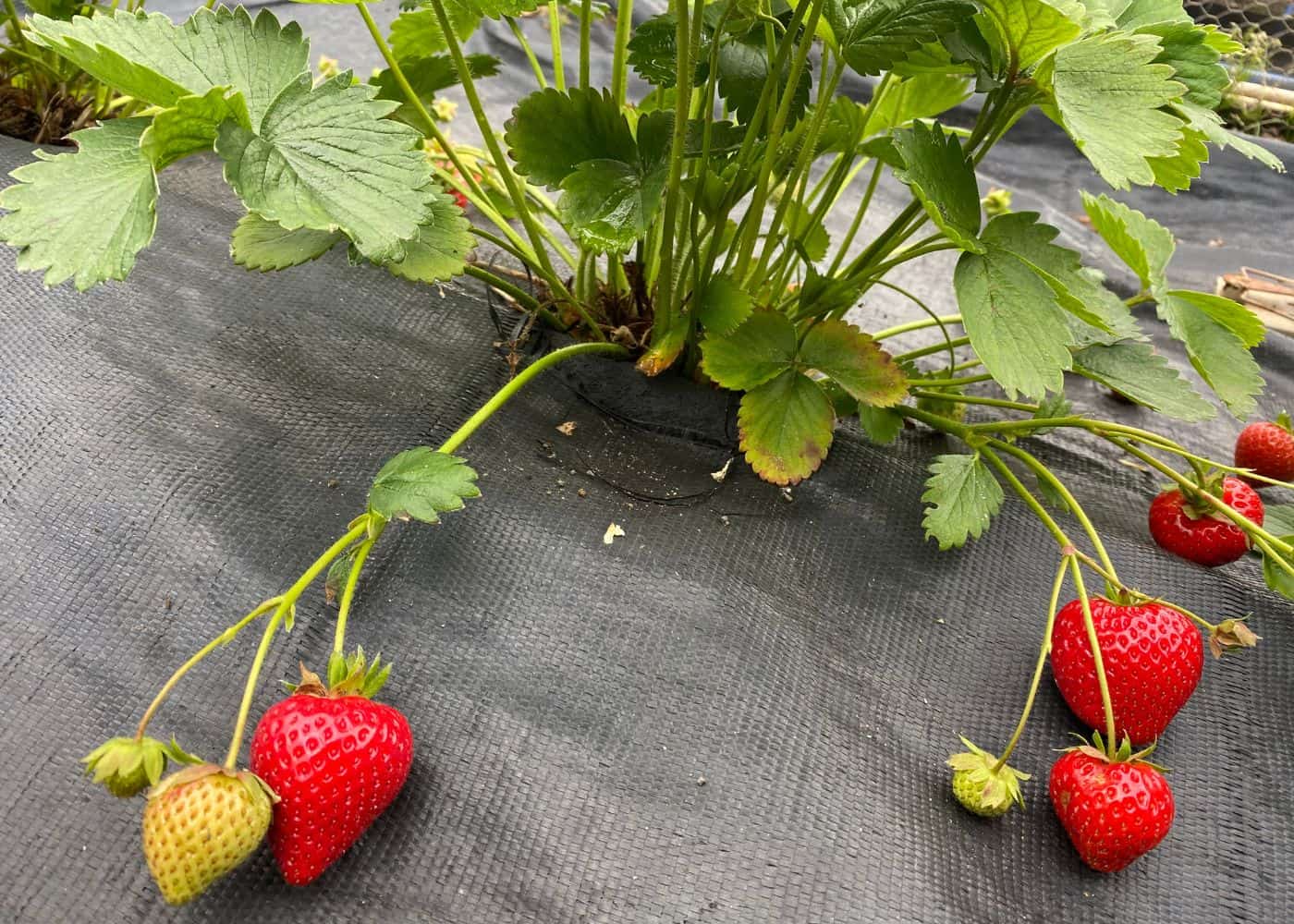
Everbearing strawberries
Everbearing types are the second type of strawberry, especially for regions with a long growing season. The plants produce two small crops- usually one in June and another in early fall. The berries tend to be smaller than those of the June-bearing types and not as sweet. However, these types are easier to care for since they require less maintenance and produce a lighter crop load.
The plants don’t make too many runners and instead multiply by forming multiple crowns at the base of the plant. In cold areas where the growing season is short, everbearing varieties may not have time for the second/fall crop to mature fully. Gardeners in the coldest zones should consider avoiding everbearing varieties for this reason.
Everbearing strawberry varieties
Here are some of the most popular everbearing strawberry varieties:
- Ozark Beauty
- Quinault
- Ft. Laramie
- Ogallala
- Eversweet
“The productivity and fruit quality of day neutral strawberries are much better than the old “everbearing” types, such as Ozark Beauty, and should be used in place of them.”
The University of Maine, Bulletin #2067, Growing strawberries
Day-neutral strawberries
Day-neutral strawberries continue to blossom and produce berries at a consistent rate all summer long through the fall. They are typically regarded as improved everbearing-type strawberries.
Blooming after their June-bearing counterparts have ceased production, these modern varieties outshine traditional everbearing types in both fruit quality and productivity. Some new varieties produce even higher yields than traditional June-bearing varieties.
Day-neutral strawberries are typically grown as annuals in raised beds. This is because they tend to decline in vigor soon after planting. They are usually planted about 6 inches apart in rows or a grid. They can also be grown in a hill system (not a matted row).
The category name “day-neutral” means that these plants are not particularly bothered by how long (or short) the days are. They just grow flower buds throughout the whole growing season (although they don’t typically set buds at temperatures above about 85°F/29°C).
“Day-neutral strawberries are the third type of strawberry. They are regarded as improved, more productive everbearing-type strawberries.”
Iowa State University, What are the differences between the different types of strawberries?
Day-neutral strawberry varieties
Here are some of the most popular day-neutral strawberry varieties:
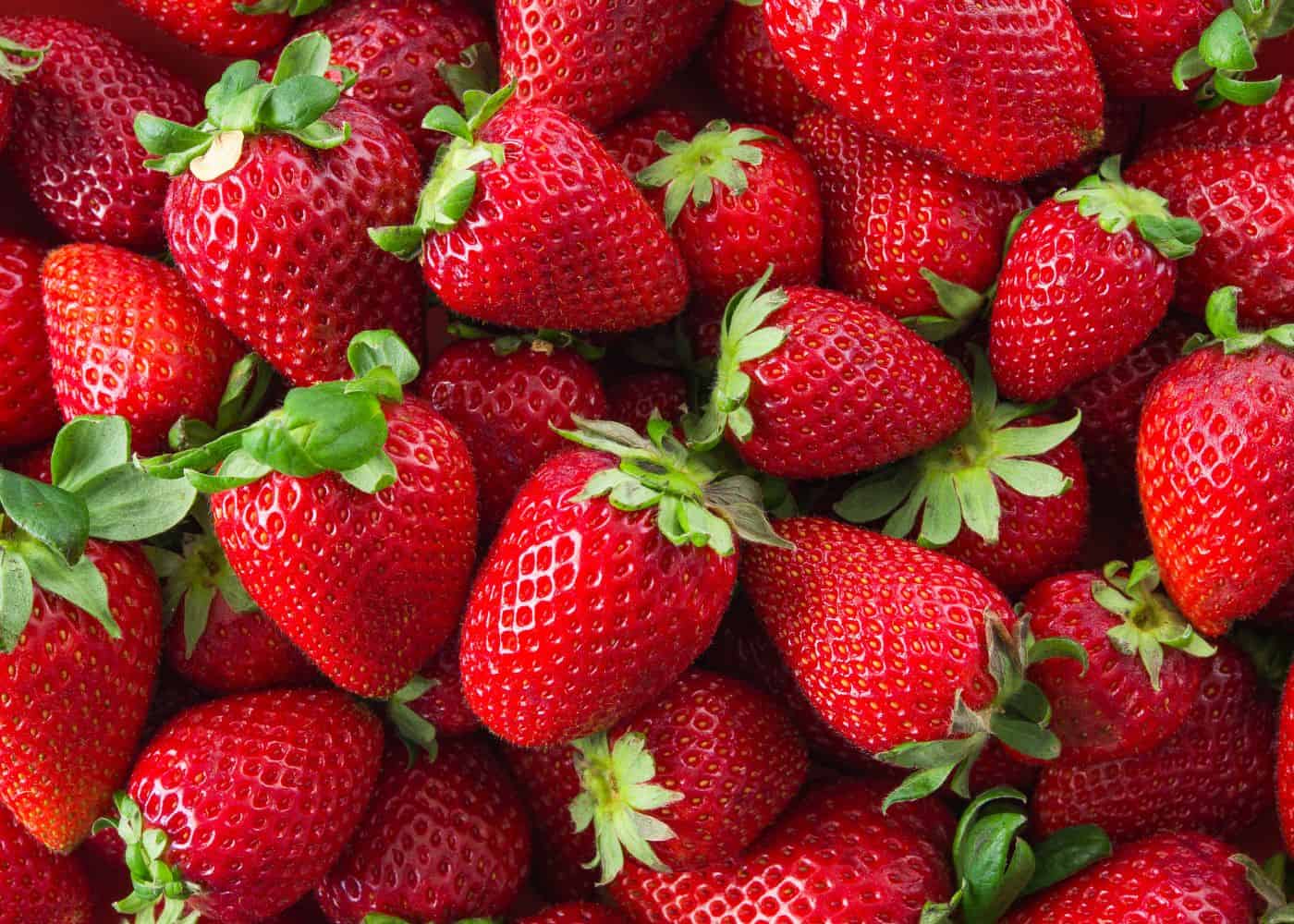
FAQs about different strawberry types
What are the different types of strawberries?
The different types of strawberries are June-bearing, everbearing, and day-neutral. June-bearing strawberries produce a large crop of fruit all at once, usually starting in June. Everbearing strawberries produce two crops of fruit, one in the early summer and one in the fall. Day-neutral strawberries produce fruit continuously throughout the growing season.
How can I tell the difference between the different types of strawberries?
One way to tell the difference between the different types of strawberries is by the time of year that they produce fruit. June-bearing strawberries typically produce fruit only in June (and sometimes into early July). Everbearing varieties put on a second crop in late summer into early fall. Day-neutral varieties will be the only ones fruiting in midsummer.
You can also look at the size and shape of the fruit, but this is not as reliable because different varieties of strawberries can have slightly different characteristics. Lastly, if the plant has lots of runners, it is likely a June-bearer. If it has few runners but there appears to be multiple crowns at the base of a single plant, its more likely an everbearer or day-neutral.
Can I grow all types of strawberries in my garden?
Yes! In fact many gardeners grow both June-bearing and day-neutral varieties so they get berries from June through until October. Some types of strawberries may be better suited to certain climates or soil types, so it is a good idea to do some research and choose a variety that suits your specific growing conditions.


